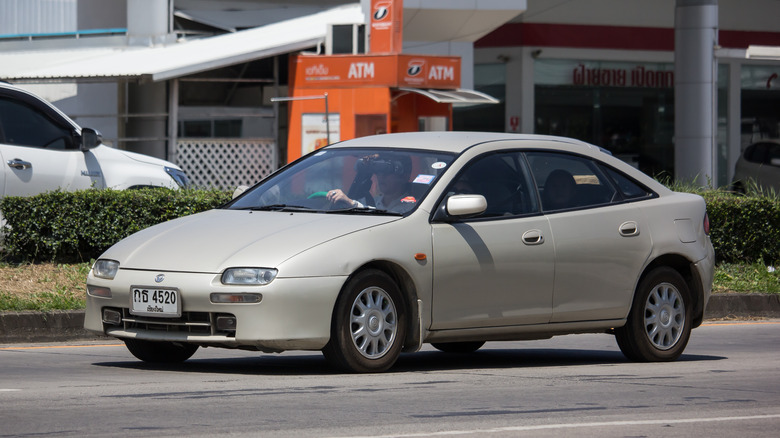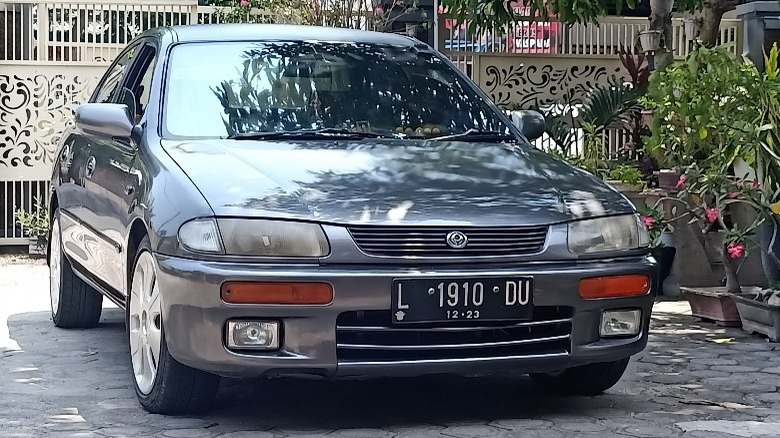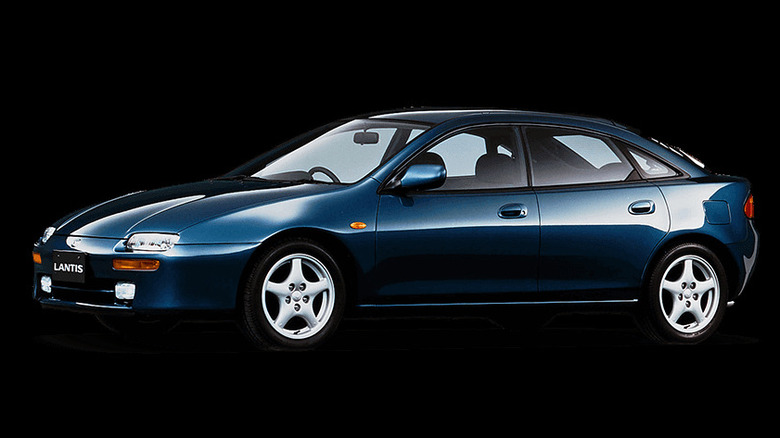Why The Mazda Lantis Is One Of The Best Cars You've Never Heard About
The first cars that typically come to mind when talking about Japanese automaker Mazda are the iconic MX-5 Miata, the rotary-powered RX-7, and the quirky Autozam AZ-1 microcar. Mazda entered the business as a cork manufacturer in 1920, and it sold its first car (or trike) in Japan, the Mazda-go, under the Toyo Kogyo Co., Ltd. name in 1931. Since then, enthusiasts have flocked to Mazda for its sporty-driving cars.
But on January 29, 2021, the automaker's "Legendary Mazdas favorite voting" campaign took an interesting twist. In commemoration of Mazda's 100th anniversary, the automaker commissioned a survey to determine the Mazda car that people loved the most. The third-gen Mazda Efini RX-7 came in fifth place, while the RX-8 and Autozam AZ-1 came in third and second, respectively.
We expected the Miata MX-5 to lord over its compatriots, but it didn't make it to the top five. As fate would have it, the Mazda Lantis sport-compact took the crown with over a million votes, making it the most legendary Mazda in the brand's history.
Mazda Lantis: More than just a 323/Protégé
Sold in Europe and Japan as two similarly-styled cars from 1993 to 1998, the Mazda Lantis is also called Astina, 323F, Allegro, or the Artis, depending on the region. Even though Mazda marketed the Lantis as a sport-compact in the same mold as the 323/Familia/Protégé, it utilized the brand's upmarket C platform of the US-spec Mazda 626 and is unrelated to the Familia's B architecture.
Factor in a sportier hatchback shape (penned by former Porsche designers) with pop-up headlights (in some markets) and a sloping roofline, it's crystal clear the Lantis is not merely a sportier Familia. Mazda called the Lantis a four-door coupe long before BMW, Mercedes-Benz, and the rest of the automotive industry caught wind of the term.
The Mazda Lantis came with three engine choices. Base models got a 1.5-liter four-cylinder engine generating 87 horsepower, while the 1.6-liter and 1.8-liter four-bangers were good for 88 and 115 horsepower, respectively. In addition, all engine choices send power to the front wheels using a standard five-speed manual or four-speed automatic transmission.
Mazda Lantis Type-R: Potent and Rare
Perhaps the most iconic Lantis of all is the JDM-only Type-R variant. It featured a compact yet potent KF-ZE 2.0-liter V6 engine with double overhead camshafts (DOHC) generating up to 170 horsepower. Not to be confused with Honda's Civic Type R, the Lantis Type-R featured revised aero bits and a limited-slip differential to deliver sportier handling and grip. The tuned V6 engine was so good that the Lantis strutted its wares in the professional racing circuit. It saw action at the 1994 Castrol Japan Touring Car Championship and has appeared in every Gran Turismo racing game (except Gran Turismo 3: A-Spec and Gran Turismo Sport) for the Sony Playstation.
The Mazda Lantis was not only quick, but it handled with authority in true Jinba Ittai fashion, having nurtured its sporty handling nature at the Nürburgring. It scampers from zero to 60 mph in 7.8 seconds — not bad for a sport compact from the '90s. The Lantis also scored high safety marks and performed very well in early crash tests, making it among the first vehicles in Japan to meet then-existing safety standards.
Mazda ended Lantis production in 1998, and none made it to US dealerships. If you're yearning for a slice of JDM exotica, the Mazda Lantis/Astina should be on top of your import shopping list.


